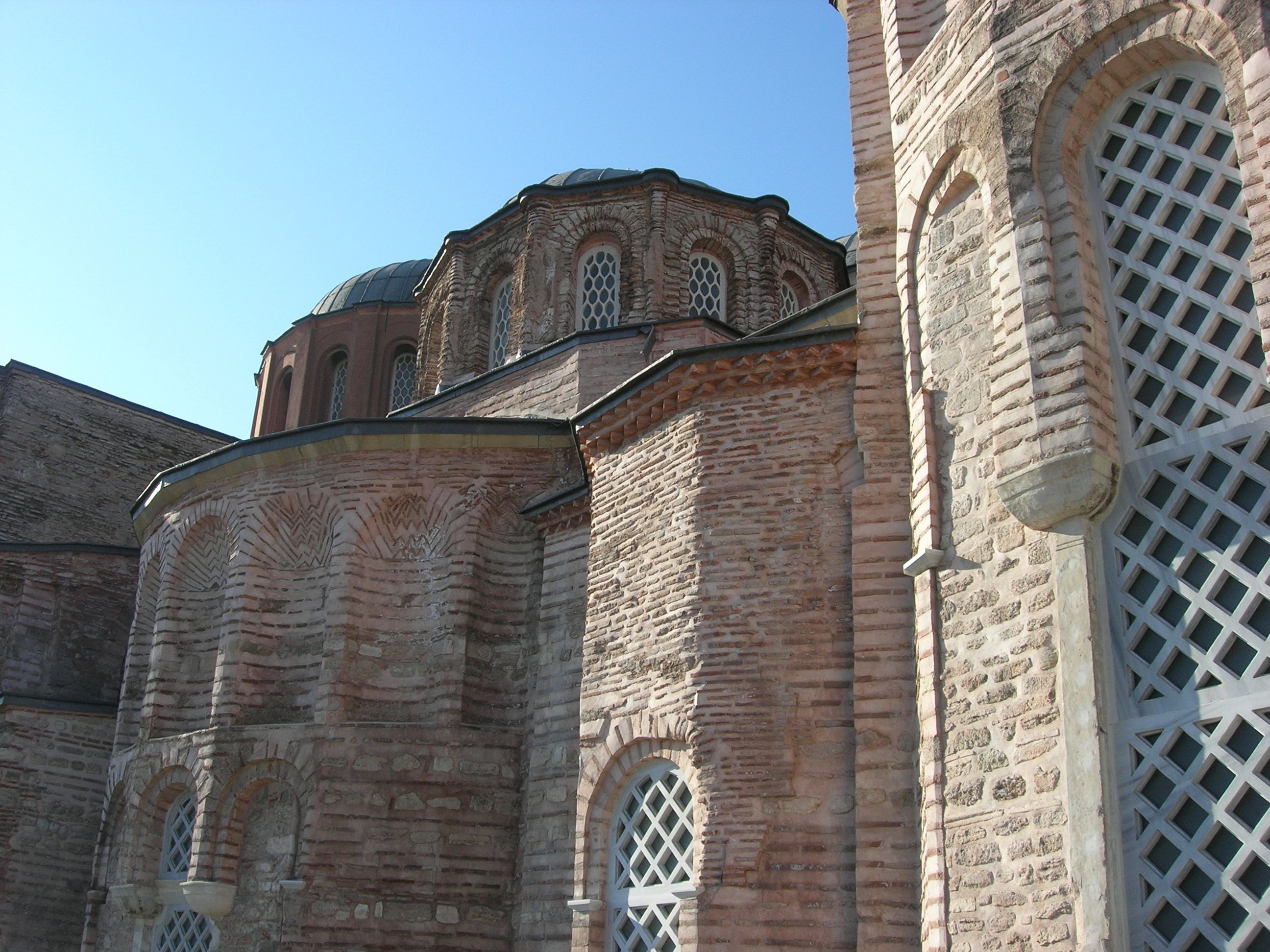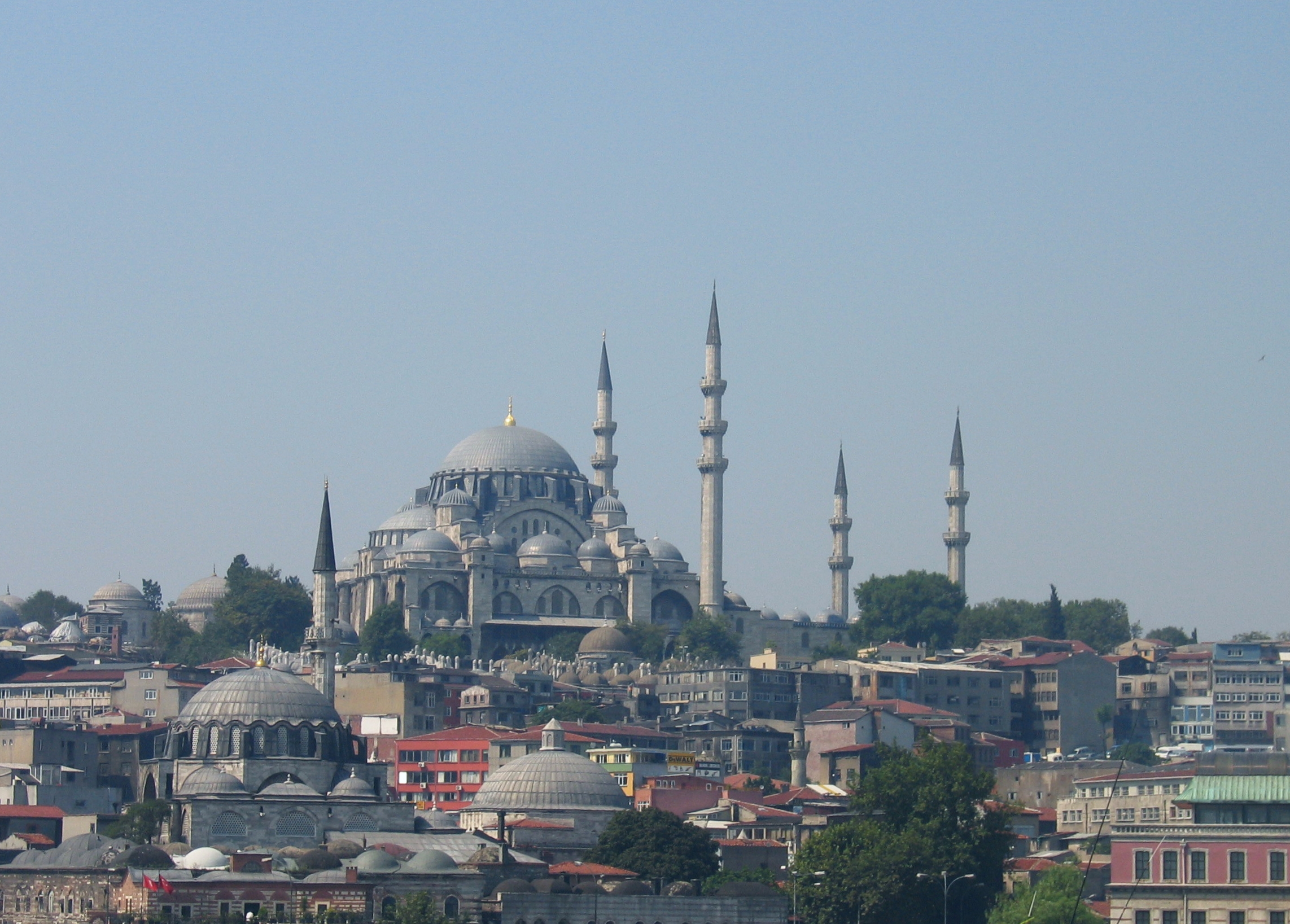|
Sinan Pasha Mosque (Istanbul)
The Sinan Pasha Mosque ( tr, Sinan Paşa Camii) is an Ottoman mosque located in a densely populated district of Beşiktaş Beşiktaş () is a district and municipality of Istanbul, Turkey, located on the European shore of the Bosphorus strait. It is bordered on the north by Sarıyer and Şişli, on the west by Kağıthane and Şişli, on the south by Beyoğlu, and ..., in Istanbul, Turkey. It was built by the Ottoman architect Mimar Sinan for the admiral Sinan Pasha. The '' türbe'' (tomb) of Barbaros Hayrettin Pasha is located just across the street. History The mosque was endowed by the Ottoman admiral Sinan Pasha who was the younger brother of the grand vizier Rüstem Pasha. The mosque was designed by the imperial architect Mimar Sinan. Sinan Pasha died in 1554 and work began after his death. The gilded Arabic foundation inscription above the arched gateway of the mosque records the completion date as November/December 1555. The Turkish inscription carved around th ... [...More Info...] [...Related Items...] OR: [Wikipedia] [Google] [Baidu] |
Istanbul
Istanbul ( , ; tr, İstanbul ), formerly known as Constantinople ( grc-gre, Κωνσταντινούπολις; la, Constantinopolis), is the List of largest cities and towns in Turkey, largest city in Turkey, serving as the country's economic, cultural and historic hub. The city straddles the Bosporus strait, lying in both Europe and Asia, and has a population of over 15 million residents, comprising 19% of the population of Turkey. Istanbul is the list of European cities by population within city limits, most populous European city, and the world's List of largest cities, 15th-largest city. The city was founded as Byzantium ( grc-gre, Βυζάντιον, ) in the 7th century BCE by Ancient Greece, Greek settlers from Megara. In 330 CE, the Roman emperor Constantine the Great made it his imperial capital, renaming it first as New Rome ( grc-gre, Νέα Ῥώμη, ; la, Nova Roma) and then as Constantinople () after himself. The city grew in size and influence, eventually becom ... [...More Info...] [...Related Items...] OR: [Wikipedia] [Google] [Baidu] |
Rüstem Pasha
Rüstem Pasha (; ota, رستم پاشا; 1505 – 10 July 1561) was an Ottoman statesman who served as Grand Vizier to Sultan Süleyman the Magnificent. Rüstem Pasha is also known as Damat Rüstem Pasha (the epithet '' damat'' meaning 'son-in-law' ) as a result of his marriage to the sultan's daughter, Mihrimah Sultan, in 1539. He is regarded as one of the most influential and successful grand viziers of the Ottoman Empire. Rustem Pasha was taken as a child to Constantinople (modern-day Istanbul), where he built a military and bureaucratic career. On 26 November 1539, he married Mihrimah Sultan, the daughter of Sultan Suleiman I and his wife Hurrem Sultan. His brother Sinan Pasha was an Ottoman grand admiral. Early life Rustem is referred to as a Croat by Tayib Osman-zade Ahmed, author of 'Hadikatul vuzara' and the Turkish encyclopedia Kamus-ul-alam. He is also referred to as a Croat by the Turkish historiographer Mustafa Âlî, although other sources suggest differe ... [...More Info...] [...Related Items...] OR: [Wikipedia] [Google] [Baidu] |
Ottoman Mosques In Istanbul
Ottoman is the Turkish spelling of the Arabic masculine given name Uthman ( ar, عُثْمان, ‘uthmān). It may refer to: Governments and dynasties * Ottoman Caliphate, an Islamic caliphate from 1517 to 1924 * Ottoman Empire, in existence from 1299 to 1922 ** Ottoman dynasty, ruling family of the Ottoman Empire *** Osmanoğlu family, modern members of the family * Ottoman architecture Ethnicities and languages * Ottoman Armenians, the Armenian ethnic group in the Ottoman Empire * Ottoman Greeks, the Greek ethnic group in the Ottoman Empire * Ottoman Serbs, the Serbian ethnic group in the Ottoman Empire * Ottoman Turks, the Turkic ethnic group in the Ottoman Empire ** Ottoman Turkish alphabet ** Ottoman Turkish language, the variety of the Turkish language that was used in the Ottoman Empire Products * Ottoman bed, a type of storage bed * Ottoman (furniture), padded stool or footstool * Ottoman (textile), fabric with a pronounced ribbed or corded effect, often made of silk or ... [...More Info...] [...Related Items...] OR: [Wikipedia] [Google] [Baidu] |
Mimar Sinan Buildings
Traditionally, Iranian architects were known as ''Mi'mars''. The Persian dictionary of ''Mo'in'' defines Mi'mar as: #That who devises the design and plan of a building, and overlooks its construction. #A Banna #That who is responsible for the building, developing, and repairs of a structure or edifice (Emārat). Classical words ''Banna'', ''Mohandes'', ''Ostad'', and ''Amal'' which appear in classical manuals and references of Islamic architecture Islamic architecture comprises the architectural styles of buildings associated with Islam. It encompasses both secular and religious styles from the early history of Islam to the present day. The Islamic world encompasses a wide geographic .... Although many scholars do not recognize the Mimar and the Architect to historically be the same, they do agree that their responsibilities overlap extensively. In this list, they are taken to be the same. The list is in chronological order and selectively spans the Islamic age based ... [...More Info...] [...Related Items...] OR: [Wikipedia] [Google] [Baidu] |
List Of Mosques In Istanbul
Istanbul, as the capital of the Ottoman Empire since 1453 and the largest city in the Middle East, contains a great number of mosques. In 2007, there were 2,944 active mosques in Istanbul. Byzantine buildings These Byzantine structures were converted to mosques by the Ottomans. * Arap Mosque *Atik Mustafa Pasha Mosque * Bodrum Mosque *Eski Imaret Mosque * Fenari Isa Mosque *Hirami Ahmet Pasha Mosque *Gül Mosque *Hagia Sophia Mosque * Chora Church now Kariye Mosque. * Kalenderhane Mosque * Kasim Aga Mosque * Kefeli Mosque *Koca Mustafa Pasha Mosque *Little Hagia Sophia * Pammakaristos Church * Sancaktar Hayrettin Mosque * Vefa Kilise Mosque *Zeyrek Mosque Ottoman mosques *Eyüp Sultan Mosque, 1458 * Mahmut Pasha Mosque, Eminönü, 1463 *Fatih Mosque, 1470 * Murat Pasha Mosque, Aksaray, 1471 * Rum Mehmed Pasha Mosque, 1471 * Firuz Ağa Mosque, 1491 * Bayezid II Mosque, 1506 *Yavuz Selim Mosque, 1527/28 * Piri Mehmed Pasha Mosque, 1530–31 *Haseki Sultan Mosque, 1539 * D ... [...More Info...] [...Related Items...] OR: [Wikipedia] [Google] [Baidu] |
List Of Friday Mosques Designed By Mimar Sinan
This is a list of the Friday mosques for which the Ottoman architect Mimar Sinan claimed responsibility in his autobiographies. Of the 77 mosques in the list, 39 are in Istanbul. Background Mimar Sinan was appointed to the post of chief Ottoman architect by the grand vizier Ayas Mehmed Pasha in 1539. Sinan occupied the position until his death in 1588 and served under three sultans: Süleyman I (ruled 1520–66), Selim II (ruled 1566–74) and Murad III (ruled 1574–95). In his autobiography ''Biographical Memoir of Construction'' (''Teẕkiretü’l-bünyān''), Sinan claimed to have designed 698 building including 80 Friday mosques and more than 400 smaller community mosques (''masjids''). In reality he led a team of royal architects and the buildings would have been collective works. Sinan himself would have been occupied with the large building projects undertaken for the sultan. These were the Şehzade Mosque (1543–48), the Süleymaniye Mosque (1548–59), the Kirk ... [...More Info...] [...Related Items...] OR: [Wikipedia] [Google] [Baidu] |
Edirne
Edirne (, ), formerly known as Adrianople or Hadrianopolis (Greek: Άδριανούπολις), is a city in Turkey, in the northwestern part of the province of Edirne in Eastern Thrace. Situated from the Greek and from the Bulgarian borders, Edirne was the second capital city of the Ottoman Empire from 1369 to 1453, before Constantinople became its capital. The city is a commercial centre for woven textiles, silks, carpets and agricultural products and has a growing tourism industry. In 2019 its estimated population was 185,408. Edirne has an attractive location on the rivers Meriç and Tunca and has managed to withstand some of the unattractive development that mars the outskirts of many Turkish cities. The town is famous in Turkey for its liver. ''Ciğer tava'' ( breaded and deep-fried liver) is often served with a side of cacık, a dish of diluted strained yogurt with chopped cucumber. Names and etymology The city was founded and named after the Roman emperor Ha ... [...More Info...] [...Related Items...] OR: [Wikipedia] [Google] [Baidu] |
Üç Şerefeli Mosque
The Üç Şerefeli Mosque ( tr, Üç Şerefeli Camii) is a 15th-century Ottoman mosque in Edirne, Turkey. History The Üç Şerefeli Mosque was commissioned by Ottoman sultan Murad II (1421–1444,1446– 1451), and built between 1438 and 1447. It is located in the historical center of the city, close to the Selimiye Mosque and Old Mosque. The name refers to unusual minaret with three balconies ( tr, üç şerefeli). The architect of the mosque is not known. It is built of Burgaz limestone with a main dome that is 24 m in diameter. When first built the dome was the largest in any Ottoman building. The mosque was severely damaged by fire in 1732 and by an earthquake in 1748 but was repaired on the order of Mahmut I. The two blue and turquoise underglaze-painted tile panels in the tympana of the windows were probably produced by the same group of tilemakers who had decorated the Yeşil Mosque (1419–21) in Bursa where the tiles are signed as "the work of the masters ... [...More Info...] [...Related Items...] OR: [Wikipedia] [Google] [Baidu] |
Barbaros Hayrettin Paşa
Hayreddin Barbarossa ( ar, خير الدين بربروس, Khayr al-Din Barbarus, original name: Khiḍr; tr, Barbaros Hayrettin Paşa), also known as Hızır Hayrettin Pasha, and simply Hızır Reis (c. 1466/1478 – 4 July 1546), was an Ottoman corsair and later admiral of the Ottoman Navy. Barbarossa's naval victories secured Ottoman dominance over the Mediterranean during the mid 16th century. As the son of a soldier named Yakup, who took part in the Turkish conquest of Lesbos Born on Midilli (Lesbos), Khizr began his naval career as a corsair under his elder brother Oruç Reis. In 1516, the brothers captured Algiers from Spain, with Oruç declaring himself Sultan. Following Oruç's death in 1518, Khizr inherited his brother's nickname, "Barbarossa" ("Redbeard" in Italian). He also received the honorary name ''Hayreddin'' (from Arabic '' Khayr ad-Din'', "goodness of the faith" or "best of the faith"). In 1529, Barbarossa took the Peñón of Algiers from the Spaniard ... [...More Info...] [...Related Items...] OR: [Wikipedia] [Google] [Baidu] |



